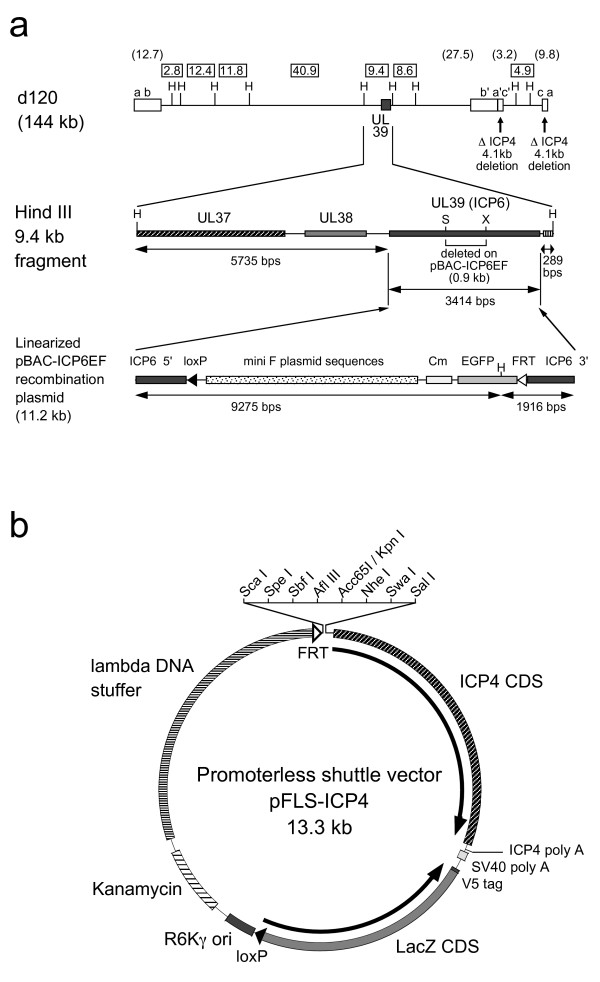Figure 2.

Schematic representation of the prototype recombinant virus M24-BAC and the promoterless shuttle vector pFLS-ICP4. (a) M24-BAC recombinant virus has the BAC sequences inserted into the UL39 (ICP6) gene of mutant HSV d120. (upper) d120 has a 4.1 kb deletion in both copies of the diploid ICP4 gene. (middle) The ICP6 gene coding the large subunit of viral ribonucleotide reductase is located in the 9.4 kb HindIII restriction fragment of the HSV genome. (lower) The BAC vector sequences were inserted into the d120 genome between the StuI and the XhoI sites of UL39 via homologous recombination using the recombination plasmid pBAC-ICP6EF. The mini F plasmid sequences contain four regulatory genes (oriS, repE, parA, and parB) essential for replication and copy number control of the plasmid [19]. H, HindIII; S, StuI; X, XhoI; Open boxes, HSV inverted repeats. The numbers in rectangles at the top of the figure show the lengths in kb of HindIII restriction fragments of d120. The numbers in parentheses show the lengths in kb of terminal restriction fragments. (b) Schematic map of the promoterless shuttle vector pFLS-ICP4. MCS is situated upstream of the HSV ICP4 coding sequence so that an exogenous promoter can be inserted to drive ICP4 expression.
